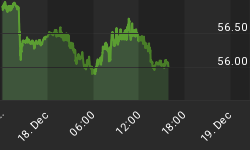As we discussed early last month, August was the start of the seasonally bullish trend for the gold and silver stock sectors. We looked at how the XAU tended to have a positive seasonal bias in August. And despite some resistance encountered late in the month, this year's August proved no exception as the XAU technically made a gain for the month, closing at just under the 96 level after starting the month at about 92.
Here is how the XAU has fared in each of the Septembers from 1994 to 2004:
September of 1994 was an exceptionally bullish one for XAU with the index rising off its August lows for that year at around 107 to a month-end high in September of 135.
September 1995 saw the XAU coil in triangular fashion in a range between 120-130, ending September of that year at mid-range for a gain for the month.
September 1996 was a downer for the index, with a decline of over 10 points from start to finish. The XAU had been in decline that year, however, since June.
September 1997 saw a surge in the XAU from its low of around 92 to its high of 110.
September 1998 saw a huge 30 point rally after the deflationary trend of that year ended promptly in September.
September 1999 was another positive month for the XAU as it rallied from its intra-month low of around 65 to its high of 93.
September 2000 saw a mild loss for the index as it started the month at 52 and ended at 50. As was the case in '96, the XAU entered September '00 in a downward trend that had been underway since June of that year.
September 2001 was a more or less sideways affair for the XAU but nonetheless positive - the index closed the month with a near 4-point gain.
September 2002 was another lateral month of trading for the XAU; the index showed a fractional loss by the end of the month. As was the case in '96 and '00, the XAU entered September of '02 in an interim downtrend that had begun in June that year.
September 2003 was a net positive month for the XAU with the index starting at 90, then rising to its intra-month high of around 98 before closing for a slight gain around 92.
September 2004 was another positive month which saw the XAU rise from 95 to around 102 by the end of the month.
What inferences can be drawn from this historical run-down? The month of September tends to be positive for the XAU and since 1994 has only been a down month when the XAU entered the month in an interim downtrend (one that usually began in the month of June). When the index enters September in a rising trend, and especially if the dominant interim 30/60/90-day moving averages are all up, the month tends to be a positive one overall. ( It is not to be assumed, however, that deviations to this seasonal tendency cannot occur. This is why it's important to stay close to the market trend throughout the month, especially with the use of the key moving averages).

Worth noting is that September 2003 was in some ways similar to the current position of the XAU, both in terms of price level and chart pattern. After making a triple bottom in March-April '03, the XAU launched a rally in May of that year, pulling back in July to test the 60-day moving average, and then resuming the rally in August before meeting with resistance in later September slightly below the psychological 100 level. The April '03 bottom in the XAU marked the start of a longer-term positive correlation with the broad market that has continued essentially unbroken ever since (attributable to the war time, inflation-driven market policies of the Fed).















